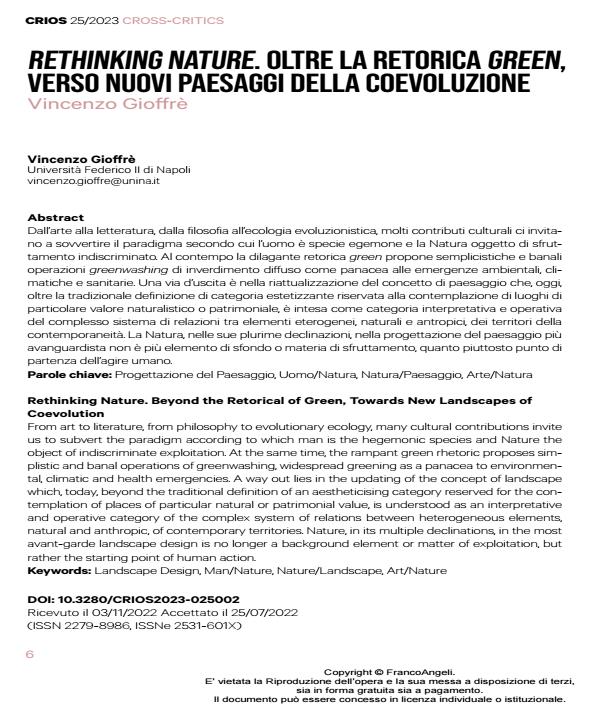Rethinking Nature. Beyond the Retorical of Green, Towards New Landscapes of Coevolution
Journal title CRIOS
Author/s Vincenzo Gioffrè
Publishing Year 2025 Issue 2023/25
Language Italian Pages 14 P. 6-19 File size 563 KB
DOI 10.3280/CRIOS2023-025002
DOI is like a bar code for intellectual property: to have more infomation
click here
Below, you can see the article first page
If you want to buy this article in PDF format, you can do it, following the instructions to buy download credits

FrancoAngeli is member of Publishers International Linking Association, Inc (PILA), a not-for-profit association which run the CrossRef service enabling links to and from online scholarly content.
From art to literature, from philosophy to evolutionary ecology, many cultural contributions invite us to subvert the paradigm according to which man is the hegemonic species and Nature the object of indiscriminate exploitation. At the same time, the rampant green rhetoric proposes simplistic and banal operations of greenwashing, widespread greening as a panacea to environmental, climatic and health emergencies. A way out lies in the updating of the concept of landscape which, today, beyond the traditional definition of an aestheticising category reserved for the contemplation of places of particular natural or patrimonial value, is understood as an interpretative and operative category of the complex system of relations between heterogeneous elements, natural and anthropic, of contemporary territories. Nature, in its multiple declinations, in the most avant-garde landscape design is no longer a background element or matter of exploitation, but rather the starting point of human action.
Keywords: Landscape Design, Man/Nature, Nature/Landscape, Art/Nature
Vincenzo Gioffrè, Rethinking nature. Oltre la retorica green, verso nuovi paesaggi della coevoluzione in "CRIOS" 25/2023, pp 6-19, DOI: 10.3280/CRIOS2023-025002